












The magazine of the art-form of the photo-essay
“A free, really high quality photo-essay magazine. Fabulous!”
Stephen Fry. British actor, writer and film & documentary maker

June 2015 back issue








Iain McKell
To commission Iain or to request prints of his work: iainmckell.iainmckell.com
Iain McKell Artist Photographer Director.
McKell grew up in Weymouth in Dorset and went to boarding school at Clifton Collage in
Bristol. In 1975 after a year foundation he studied graphic design at the Exeter College of
Art and Design at the same time began working as a seaside photographer aged 19 in
his summer holidays and became his first serious projected documenting his own life
and the environment he grew up in including family, friends, girl friends, people who
worked or lived in Weymouth and holiday makers. Moving to London in 1979 to work as
a graphic designer At 22 he quit his job in design to follow a career in photography his
new projects was the Mod/Skinhead revival and self published his first book titled SUB
CULTURE. At 23 he took a trip to New York to photograph the Guardian Angels then
returning to London’s immerging new underground scenes of 80’s club culture featuring
Blitz Kids like Boy George who was totally unknown at this point. This led to editorial and
record companies commissions and photographed the new rising star Madonna for her
Gavin Gough
To commission Gavin or to request prints of his work: www.gavingough.com
Gavin Gough is a freelance editorial photographer, currently based in Bangkok, Thailand.
He is represented by Getty Images and 4Corners.
e-mail: mail@gavingough.com


Jacob Nachum
To commission Michal or to request prints of her work: facebook
Jacob Nachum grew up in the city of Bnei Brak in Isreal, in an ultra-Orthodox home. He
was educated at an ultra-Orthodix Yeshiva.
He wanted to photograph the ultra-Orthodox rituals and customs that he had grown up
with, not from the perspective of being an ultra-Orthodox Jew himself but as if he was
sitting on the outside and looking in.
Damian Bird
To commission him or to request prints of his work: www.damianbirdphotography.com
Damian Bird, is a photographer and photojournalist with many years of experience,
working in war zones and trouble spots around the globe. He was educated in
Photography at the Surrey College of Art and Design and at the London College of
Printing where he studied for a post graduate degree in Photojournalism.
In 2011 he founded Life Force magazine with his business partner and wife of 12 years,
Alice. As well as Editing Life Force magazine, he is currently engaged in photographing
a series of photo-essays on English culture and has recently returned to Afghanistan
(Aug 2013).
He continues to have his work published in national and international newspapers and
magazines including The Times, the Telegraph, the Express, the Observer, GQ, Esquire,
Dazed & Confused,The Face, Country Life and Geographical magazine.

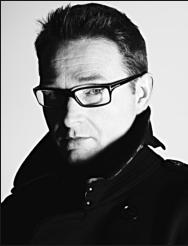
He lives with his wife and four children in Devon, England.
AJ Heath
To commission AJ or to request prints of his work: www.ajheathphotography.com
AJ Heath is a British portrait and social documentary photographer currently living and
working in the Himalayan Kingdom of Bhutan. He has been a freelance photographer for
the past 7 years and has worked for several NGOs in Africa, as well as being embedded
with the British Army in Afghanistan. He recently gained a Masters in Photojournalism and
Documentary Photography from the University of Arts London.
His work has been published in international media including Al Jazeera, The Guardian,
The Times, Evening Standard, The BBC, among others.





Matilda Temperley
To commission Matilda or to request prints of her work: www.matildatemperley.com
Matilda was born in 1981 on a cider farm in Somerset. She trained at the London School
of Tropical Medicine and worked in East Africa in Malaria control for two years. She then
turned to photography. She divides her time between her commercial work and her
personal work. Her personal work is inspired by marginalised societies.
In 2014 Matilda was a finalist in the SONY World Photo awards for her work in Ethiopia.
She was also a finalist in the CIWEM Environmental Photographer Of The Year awards
for her work on the Somerset floods. Matilda’s first book Under The Surface- Somerset
Floods', was published in 2014 by Burrow Hill Books.


Beverly Joubert
To commission Beverly or to request prints of her work: www.beverlyjoubert.com
Beverly is an intuitive photographer rather than a technical one, a person who lives and
breathes Africa and its wild open places filled with big cats and elephants, racing zebras or
bubbling lava flows. National Geographic Explorer in Residence, just one of 14 people
selected to represent this level of professionalism in the Society, she has specialized in
African photography for nearly 30 years, with images in a dozen or more National
Geographic Magazines, in 10 books, and thousands of articles around the world. Some
would say that she and husband, Dereck Joubert, are among the most famous wildlife
filmmakers in the world, and in this pursuit she co-producers with Dereck and records
sound. An equally important passion for Beverly is that of creating an image that tells a
complete story in one instant, one frame; a story that is both a celebration of the sheer
beauty and wonder of wildlife and also a window into its future.
At the moment her photography and film work is focused on elephants as well as big cats,
as their numbers are rapidly falling due to poaching. She strives to create images that
open a window into the souls of her subjects so that the viewer will feel a connection with
these individual animals and will want to fight for their survival. It is her own brand of
Patrick Ward
To commission Patrick or to request prints of his work: www.patrickwardphoto.com
During the last five decades Patrick Ward, born in London in 1937, has continuously
photographed the English at play, bringing a wry and affectionate eye to his images of
their eccentric and often bizarre rituals.
His interest in photography began while completing compulsory military service in the
1950s. The only escape from army camp then was an evening course and Patrick chose
photography. By some miracle his then girlfriend sent him the seminal book, The Family
of Man, a photographic monument to the joys and tribulations of life, as edited by the
great Edward Steichin. The dye was cast. A full time photography course was followed by
a much more rewarding learning curve assisting John Chillingworth, of Picture Post fame.
His was a generous influence, helping Patrick to make the leap from student to working
photographer.
Patrick then went freelance and was lucky to catch the new wave of newspaper colour
magazines springing up in the early 1960s. He worked with the Observer and Sunday
Times magazines and later for the Telegraph Magazine during the 1960s and 1970s,




Roberto Pazzi
To commission Roberto or request prints of his work: robertopazziphotography
Born in Milan (Italy) in 1973, Roberto graduated in Engineering. He is currently living in
Italy. He loves to travel.
From an early age, Roberto discovered himself as a backpacker. Recently, he started to
explore his great love for photography.
In 2014, he began to collaborate with a manufacturer of decorative paintings and with a
fashion designer.
In October 2014 Roberto created his page on Facebook and this web site. In April 2015 his
first exhibition was held.



Yannis Kontos
To commission Yannis or to request prints of his work: www.yanniskontos.com
Yannis Kontos was born in Greece in 1971. He holds a PhD degree in Documentary
Photography (University of Wales, Newport), an MA degree in Photographic Journalism
(University of Westminster) and BA degrees in Photography (Athens' Technological
Educational Institute) and Physical Education and Sports Science (University of
Thessaloniki).
As a freelance professional photojournalist, Kontos has been associated with the French
international agencies Sygma, Gamma and the American Polaris Images from its inception
to date. He has documented dozens of stories in more than 45 countries of the planet,
from Palestine and Israel to Western Sahara and Sierra Leone, and from North Korea
and Indonesia to Iran and Colombia. His work has been recognized by 20 respected
awards to date including first prizes in the World Press Photo Competition, POYi, Life
Magazine’s Alfred Eisenstaedt Award, N.P.P.A. “The Best of Photojournalism” and
Médicos del Mundo Luis Valtueña Award.

Q Sakamaki
To commission Q or request prints of his work: www.qsakamaki.com
Q. Sakamaki: New York-based Japanese documentary photographer, focusing on deadly
conflicts, human rights and socio-economic issues worldwide. Recipient of many
international awards, including World Press Photo and Olivier Rebbot of Overseas Press
Club. Sakamaki’s photographs have appeared in books and magazines worldwide and
have been the subject of solo shows in New York and Tokyo, and his work of Liberian child
soldiers has appeared in a media campaign for the prevention. He has published five
books, including “WAR DNA”, covering seven deadly conflicts, published by Shogakukan
in Japan and “Tompkins Square Park”, covering New York’s civil right, anti-gentrification
movement, published by PowerHouse Books in US. He holds the master degree of
International Affaires from Columbia University. Represented by Redux Pictures. Co-


Chris Dorley-Brown
To commission Chris or request prints of his work: www.modrex.com
“Hackney was a fascinating place in the 1980s; a bit old fashioned but full of a
wonderful mixture of people who seemed to get on very well with each other. .... It
was the perfect place to photograph if you were interested in ‘social documentary’.”
Chris Dorley-Brown is a British photographer who has lived and worked in the East
End for over 30 years. He trained as a photographer with Red Saunders in the early
1980s and then set up his own practice in east London. He began documenting the
area around Hackney, and undertook several public commissions including a
project for Hackney Council to photograph every tower block estate in the borough
as well as becoming photographer-in-residence at Homerton Hospital.
His 30 year archive traces back to the after-effects of post-war rebuilding, and extends

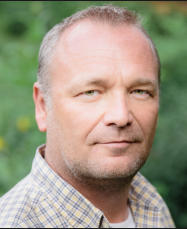
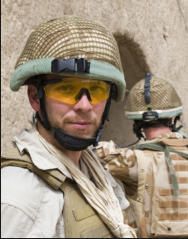
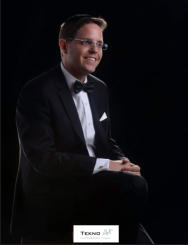
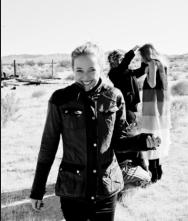
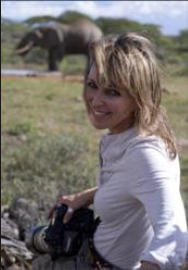
photographic activism and it looks to seep into the hearts of the viewer, stirring a long-lasting passion, rather than a short
sharp shock to the heart as a means to motivate action.
She is a child of Africa and that seems to make all the difference because deeply embedded in her work is a knowledge of
her subjects; she seems to understand the leopard through the highlights on the eyes and what it will do next, because she
has seen it thousands of times before. She feels the mist swirl around a male lion… and we as observers of the image she
gives us, can also feel the roar that is about to come from its mouth, because she has heard those roars daily for decades.
The authenticity of her work has been recognized by institutions like the American Academy of Achievement, and in The
World Ecology Award, let alone seven Emmy Awards, a Peabody and endless other notable film awards that they have
collected together. She is a co-founder of the Big Cats Initiative and sits on the board of WildAid in San Francisco, and
regionally on Great Plains Conservation boards in Kenya and Botswana. Their TED talk (2010) has also been seen by
thousands of people.
Her passion for wildlife is endless. Perhaps for Beverly, the most prestigious and valued accolade is the Presidential Order
of Merit given to her by the president of Botswana His Excellency Ian Khama, for work done for the enhancement of the
reputation of Botswana via her images.
But Beverly’s eye for light and recognizing a unique moment in wildlife comes from quite simply doing the time in places she
loves, with someone she loves and with a healthy blend of outrage against what is happening to these wild places and the
precious animals she knows so well.
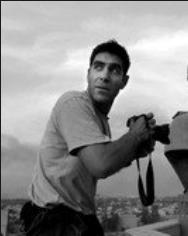
His photographs, texts and interviews have been published in the world's most well known publications as: Time, Newsweek,
Life, The New York Times, Stern, Der Spiegel, Nouvel Observateur, Paris Match, L’Express, Le Monde, Liberation, The
Independent, The Sunday Times Magazine, The Observer, GEO, L' Espresso, Panorama, La Republica, El Pais, etc. and
have been shown at exhibitions internationally. He has published two books: «Possible / Impossible: Aporias» and «North
Korea: Red Utopia».
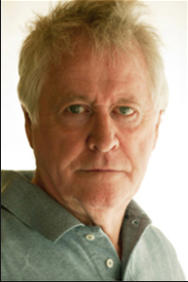
travelling widely on assignments. In 1980 a Bicentennial Fellowship allowed him to explore America for a year and this led
on to assignments from American journals, Including National Geographic Traveler and the Smithsonian Magazine.
Throughout this period Patrick continued his personal project of photographing the English at play, mostly in black and
white. In viewing this small collection from his 1970s work it’s tempting to assume that he brought a political agenda to this
personal work and images such as Eton Wall Game at Eton College, 1977, seen side by side with Pearlie Family, East
London, 1977, might tend to support this view. The reality is that Patrick’s primary concern has always been to simply and
honestly document individual people, whatever their social background. However, we bring our own feelings and prejudices
to viewing photographs and so, forty years on, these images are for you to enjoy and interpret as you wish.
In 2014 Patrick published a collection of his personal work titled Being English.
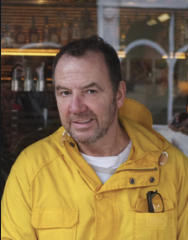
first ever magazine cover for pop magazine Number One. At 27 he held an exhibition in his own newly acquired studio in
1984 15 Westland Place in Shoreditch, East London entitled 'Iain McKell LIVE'. In this event members of the public were
invited to witness McKell at work, he photographed members of The Comic Strip and many of the visitors. This was
followed in 1985 by a show and open workshop in The Photographers' Gallery, titled LIVE! 85 showing his work and a
documentary film about the previous year. McKell began to work on advertising campaigns for Smirnoff and Red Stripe
and many others. At the same time did various road projects abroad from Spain to Morocco, Africa and Italy.
McKell has been photographing various subcultures since the 1980s, and has since documented various other counter
cultures, including Psychedelic Trance in Thailand , Fetish, Druids/Pagans, winter night carnivals in Summerset, London
Dandies and American Rockabilly. In 2004 he published his 2nd book Fashion Forever focusing on youth culture’s fixation
on style. He has also spent over ten years befriending and photographing a group of New Age Gypsies. The result of this
project was the publication of a book and various exhibitions, in New York, London, Paris and Milan. He also went on to
collaborate with Kate Moss for V Magazine. Kate Moss travelled with Mckell spending time with the travellers and journeying
for two days together living and sleeping with them and taking photos ect.
2012 McKell released his third book, Beautiful Britain, a collection of his photographs between 1970 and 2012.
He also started a Blog projected Look At Me Look At You and is invested in street photography. A dairy sketchbook, mirroring
the work from his first projected in his home town Weymouth. It maps out Mckell’s emotional world and his feelings of the
given moment. Mostly urban but some times trips abroad or road trips to the country side.
At present New projects An American Prayer- A journey by bus from the underground scene in New York to LA. Seaside
Town – going back to my roots. A road trip around British Sea Side Towns. Radical People – A series of portraits of London
people over 50 who are creative trail blazers shaping modern culture on a global platform. Working on an experimental edit
from the blog untilled LOVE FUCKS for Life Forse.
The self published book SUB CULTURE 1979 has been repackaged with a limited edition 150 copies along with a sighed
print which sold out over the weekend at the 2015 Los Angeles A Book Fair who in tern chose it as ‘Best book of the festival’.
At present working as an Executive Producer contractually partnership with an American Producer on a script development
for a film project based on the book The New Gypsies to be for either TV or Cinema.
Clients include
i-D, The Face, The Observer, Sunday Times, Independent, Telegraph, English Vogue, French Vogue, Italian Vogue, L'uomo
Vogue, Cassa vogue, Numero, Dutch Zoo, Tank, V magazine, Beat, The New British. French Elle, German Glamour, French
L’Official, Dutch L’Official. Black Book, New York Times and WSJ Levis , Wranglers, Bonobo, Philips, Jigsaw, Max&co, Red
Stripe, Vladivar, Tia Maria, Mercedes Benz, Nixon, Pepsi Cola, Smirnoff, Vidal Sassoon, Fishermans Friend, Sony Playstation,
Photographed numerous high profile personalities such as Kate Moss, Sam Smith, Brad Pitt , Will I Am, Gilbert and George,
Grayson Perry, Little Mix, Vivian Westwood, and others.
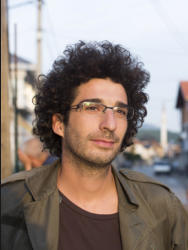
Corentin Fohlen
To commission Corentin or to request prints of his work: www.corentinfohlen.com
Freelance photographer distributed by Divergence and working on assignment for: The
New York Times, “M” (Le Monde Magazine), Libération, Stern, Polka Magazine, The
International Herald Tribune, Le Monde, le Figaro, Paris Match, le Point, le Nouvel
Observateur, l’Express, Le Temps, Die Zeit.Born on September 27th 1981 in France.
During his studies in art and drawing in Belgium in 2003, he discovered photography. A
couple of years later, he started to work for a small photo agency, Wostok Press,
covering political and social news in Paris. After being distributed by the agencies
Gamma and Abaca Press, he joined the association Fedephoto to distribute his work
independently, on international news: elections in Afghanistan, earthquake in Haiti, the
Red Shirt uprising in Bangkok, the Kosovo independence, conflict in North Kivu, Southern
Sudan independence, Arab Spring in Egypt and Libya, the first free elections in Tunisia
and Egypt, the famine in the Horn of Africa.
In 2012 he embarked on long-term work in Haiti; a reflection on the consequences of international
control over the country.
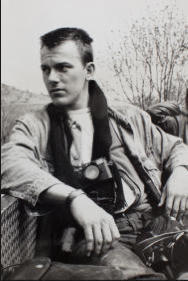
Adam Hinton
To commission Adam or to request prints of his work: www.adamhinton.net
Adam began his photographic career at the age of 12 when his Father bought him a
basic SLR camera. He became fascinated with a new way of looking at the world and the
ability to record things of importance. When Hinton was 15, he received the first
installment of compensation from the Government following a knife attack (his attacker
had a thing against punks) and instinctively he knew what he was going to spend the
money on: more lenses. When he received the rest of the money at 18 he spent it all on a
set of professional cameras and lenses. From that moment onwards, photography has
been the constant focus for him. It has enabled him to vocalise his other interest: politics.
Studying photojournalism in the 80s enabled Hinton to articulate his feelings, beliefs and
values into a visual medium that he could communicate to others. He would take photos at
all the demonstrations he went to: anti-apartheid, anti-nuclear, the miners' strike and the
picket lines at Wapping. He hoped, and still does, that his images could portray something
of the way we live today, how each action has a reaction, that nothing is without cause or
response.
Hinton believes in the good of people. “Wherever I have travelled, the people I have met and stayed with have been
welcoming and open. Even in the most dire situations, when almost everything seems negative, I find myself photographing
the positives. When I stayed with a family in the favelas of Rio de Janeiro I found that in spite of the level of violence
surrounding people living there, it was outweighed by the community's cohesion. They had, without any external help,
organised football and ballet classes for the children and adults, art clubs, after-school care and had built their own library.
Families supported each other and the community had a strong sense of social solidarity. This is what I wanted to
photograph, not the violence and danger. When I first started taking pictures I found that the social documentary style of
B&W suited my work brilliantly (things were more black & white to me then). However, as time has gone by, I have moved
away from the more traditional image to something I think is more fluid and spontaneous.”

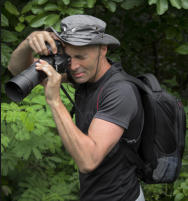
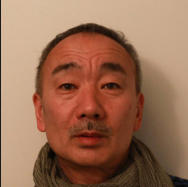
founder of Instagram showcase Hikari Creative (@hikari.creative).
www.instagram.com/qsakamaki or @qsakamaki
through the Thatcher years, the Blair years and on into the present period of ‘regeneration’ that laid the ground for the
extensive makeover of large parts of East London for the 2012 Olympics.

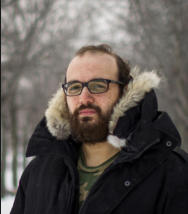
Amru Salahuddien
To commission Amru or request prints of his work: Facebook
I am an Egyptian photojournalist currently based in Montréal. I studied fine arts and
specialized in painting, but a year after graduation in 2006, I made the switch to
photojournalism. In late 2008, I began covering wars and conflicts in the Middle East for
several news agencies and newspapers like AP, Xinhua and the Anadolu news agency.
I have covered many of the major conflicts in the Middle East such as the Gaza war of
2008, the Libyan war, the Egyptian uprising and later the aftermath of the military coup in
Egypt. I also focus on humanitarian stories in the region. I have moved to Montréal,
Canada, in October 2014. I am currently focusing on the students movement against
austerity and the autochthons issues in Quebec.


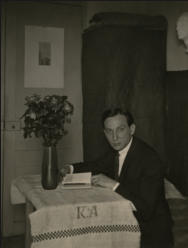
André Kertész
Born in Hungary in 1894, André Kertész was one of the most internationally significant
photographers of the 20th century. Kertész moved to Paris after WW1 and worked as a
freelance photographer. On the approach of the second World War Kertész moved again,
this time to New York City, where he published photos in magazines such as Look,
Harper’s Bazaar and Vogue.
Although it is often assumed that after Kertész moved to New York in 1936, he seldom
travelled, he did in fact return regularly to Europe. These trips to Europe include visits to
London, France and Budapest in 1948; to Venice, France and Budapest in 1963; Hungary
and Spain in 1971; London, Paris and Milan in 1972; France in 1975, 1976, 1979, 1982,
1984; and little known visits to England in 1972, 1980, 1983 and 1984.


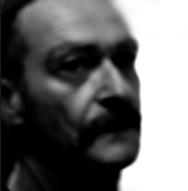
In May 2015 the "Daily Mail", "The Times", "Daily Telegraph", "Life Force Magazine", "Fliiber.com", "Shot! Magazine", "L'Eco
di Bergamo", "Il Popolo Cattolico", "INDEX.HR", "Bergamo Post" and many other media worldwide published articles
surrounding Roberto and his works.
At present, he published the books titled "The face of India", "The Timeless Valley" and "Streets of the World".
Roberto's ultimate aim is to combine his passions for travelling and photography, and make them
his lifestyle.























